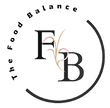WHAT IS TUBE FEEDING?
Patients come to the food balance because of our experience in delivering a standardized approach in delivering tube feeding consultancy to people who are very sick.
If you or your family member is facing difficulty with eating and feeding tube has been placed. Enteral Nutrition provides a means for meeting your body’s nutrition needs. There are many conditions where you may need this, especially if:
- You have been diagnosed with dysphagia (difficulty in swallowing)
- You have been experiencing weight loss and you find it difficult to meet your nutritional requirements.
At the food balance, we take care of
- Stimulating Gastrointestinal Tract: Your nutritional needs, stimulate your gastrointestinal tract so that you can come off the feeding tube when your body has healed.
- Personalized Tube Feeding Plan: To help you take care of your tube and make sure you meet adequate protein and caloric requirements.
- Ongoing support: Including coordination during home care, so that you can manage your patient’s tube feeding well.
Universally, a feeding tube works by delivering specific commercially prepared liquid nutrition formula directly into the stomach or intestine. This is done via nasogastric tube (non-surgical) or percutaneous gastrostomy tube (PEG) (surgical). Depending on the condition you may be required to use a feeding tube for a few months or maybe for the rest of your life.
CONDITIONS TREATED WHILE USING TUBE FEEDING
Delivering nutrition through a tube can help you maintain adequate nutrition when a gastrointestinal condition makes it impossible to consume food by mouth. The conditions where you may enteral nutrition are as below
- Esophageal or Gastrointestinal Cancer
- Intestinal failure,
- Bowel Obstruction,
- Ulcerative Colitis
- Stroke
- Hypoxic brain injury leading to a vegetative state
WHAT TO EXPECT WITH TUBE FEEDING?
You or your family member may need a surgical procedure to insert the tube either through your nose and into the stomach or a tube into your intestines.
You may find the entire feeding through the tube scary at first, but you can be assured that we would teach you the evidence-based standards you need to know. With our help, you will learn how to take care of the tube and how to prepare the formula and which one is right for you.
There is a possibility you or your patient may experience diarrhea or constipation. Always remember the diet always needs a little fine-tuning. Over time, your body will adapt and adjust to the liquid nutrition being given.
NASAL FEEDING
Nasogastric (NG) Nasojejunal tubes (NJ), are generally used when tube feeding is needed for a relatively short time, usually 6 weeks.
GASTROSTOMY FEEDING
Surgically placed tubes include Gastrostomy Tube (G tube) or Gastrojejunal tube (Gj) are used to feed for a long time or if a patient cannot have an Ng tube.
SIDE EFFECTS OF TUBE FEEDING
The most common side effects observed are nausea, vomiting, diarrhea, constipation, bloating, and stomach cramps. Other possible side effects include infection on the peg tube feeding site, aspiration (Formula getting into the trachea (the windpipe), and tube being pulled out.
SIDE EFFECTS OF TUBE FEEDING
The most common side effects observed are nausea, vomiting, diarrhea, constipation, bloating, and stomach cramps. Other possible side effects include infection on the peg tube feeding site, aspiration (Formula getting into the trachea (the windpipe), and tube being pulled out.
TYPES OF ENTERAL FEEDING
BOLUS FEEDING- In this method, a large volume of formula feed is given several times a day. It could be after every 3 to 4 hours.
CONTINUOUS FEEDING – This is most commonly used during hospitalization, and an electronic pump is required which provides the formula slowly in small amounts over hours. It helps to reach caloric goals and is recommended for patients experiencing nausea and vomiting.
PRECAUTIONS TO BE TAKEN AT HOME
Adults or children may go home with a feeding tube. Routine tube feeding guidelines are explained upon discharge. Precautions must be taken for:
- Weight gain or loss
- Dehydration
- Infection,
- Leakage from the tube
- Diarrhea
EQUIPMENT AND SUPPLIES
FORMULA: The most formula is commercially prepared and is in liquid form which can be used. Some formula comes in a powder or liquid that you would need to mix with water.
FEEDING SYRINGE: This comes in a 60 ml feeding syringe readily available at the hospital pharmacy.
FEEDING PUMP: This is required if you or your patient is receiving continuous feeding.
FORMULA BAG: This is required for continuous feeding only.
IV POLE: Required for gravity-based feeding.
GENERAL PRECAUTIONS FOR TUBE FEEDING AT HOME
If it’s an adult or a child being fed precautions are needed for tube feeding.
Always make sure hands are washed with soap and water before giving a feeding.
The head of the bed is positioned higher than the stomach.
Do not keep already prepared feed or an opened commercial formula for more than 24 hours.
The feeding should be given at room temperature.
Sterilize the syringe completely after each use.
Always observe for bloating, nausea, vomiting, stomach swelling, or irritability. If this happens get in touch with your physician and registered dietitian on board.
NUTRITION SERVICES
Offering a range of nutritional therapies, we can help patients with nutrition optimization and improve their quality of life.
DHA MEDICAL CENTRE
P/38 Khayaban e Rahat, 10th St, D.H.A Phase 6 Phase 6 Defence Housing Authority, Karachi, Karachi City, Sindh 75500
VISIT CLINIC
Phone: 03332112455

